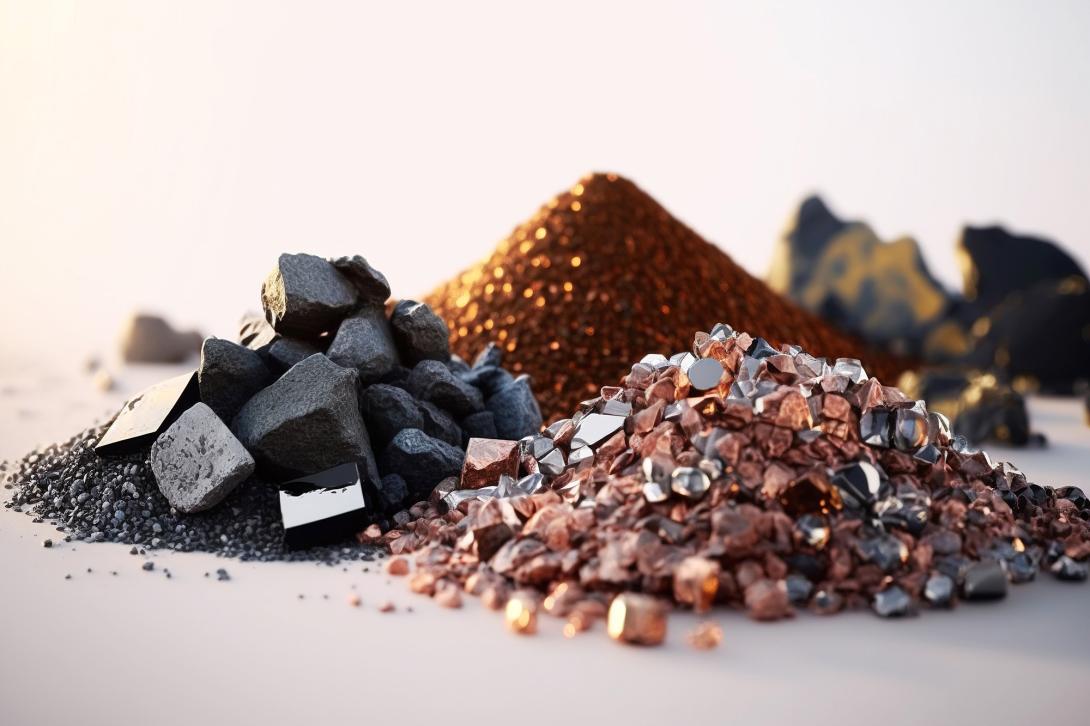President's Commentary: Countering the PRC’s Control of the Strategic Mineral Supply
The United States has only one active mine for rare earth minerals.
The Mountain Pass Rare Earth Mine and Processing Facility in California supplied less than 15% of the world’s rare earth materials in 2020. The People’s Republic of China (PRC) produces 70%, according to a Reuters article published last year. The U.S. Geological Survey (USGS) reports that China also owns 44 million tons, or 34%, of the world’s total reserves of rare earth oxides, which are useful in developing nanoelectronics. The United States owns about 2 tons.
These scary statistics illustrate the strong hold our nation’s primary competitor has on a global supply chain critical to our economy and our national security. Including the 17 “rare earths,” there are 50 minerals essential for a wide range of electronic devices, such as batteries, computer chips, mobile devices, lasers, electric vehicles and in-demand renewable energy technologies.
Artificial intelligence, quantum computing, cybersecurity, critical infrastructure protection, data centricity, modern networks, mobile communications, spectrum operations, advanced sensing and Combined Joint All-Domain Command and Control are all central to our future national security and defense, not only for the United States but for our friends and allies as well. None of that happens without advances in batteries, semiconductors and other components for cutting-edge computing, and cutting-edge computing does not happen without these minerals. They are the building blocks for modernizing our military and meeting the critical needs for gathering intelligence and securing our homeland.
Furthermore, these minerals are used in fighter jets, destroyers, submarines, missiles, unmanned vehicles and radar systems. The F-35, for example, requires more than 900 pounds of rare earth elements. Each Arleigh Burke DDG-51 destroyer needs 5,200 pounds, and a Virginia-class submarine needs 9,200 pounds.
The COVID-19 pandemic exposed supply chain vulnerabilities, raising alarm bells across the U.S. government and around the world. And the PRC’s threats to punish nations by limiting exports have caused those alarm bells to ring all the louder.
China dominates the supply in part because of its lax environmental controls. Harvard International Review explained that the two primary methods for mining rare earth minerals create “mountains of toxic waste” that contaminate air, water and soil with 13 kg of dust, 9,600-12,000 cubic meters of waste gas, 75 cubic meters of wastewater, and one ton of radioactive residue.
The United States and our friends and allies, however, are rising to the challenge of developing new, environmentally friendly sources. For example, the Defense Department has awarded more than $439 million to establish domestic production capabilities. Other U.S. departments and agencies, including the Environmental Protection Agency, USGS, and the Departments of Justice, Treasury and State also contribute. Searching “strategic minerals” on the USGS website offers a glimpse of the dizzying array of activities currently underway to reduce the PRC’s control.
While this is a whole-of-government effort, the United States is not tackling the challenge alone. Australia, Canada, Estonia, Finland, France, Germany, India, Italy, Japan, Norway, the Republic of Korea, Sweden, the United Kingdom, the United States, and the European Union have created the Minerals Security Partnership to foster public and private investment in responsible, global supply chains. Additionally, Japan, the victim of two PRC-imposed rare earth bans, has proposed a plan to the rest of the G-7 nations—Canada, France, Germany, Italy, the United Kingdom and the United States—to support mining and refining operations in Africa and Latin America.
And we are already making some progress. China refines 89% of the world’s neodymium, which is useful in the continuing miniaturization of technologies, and praseodymium, which is used to build magnets found in numerous electronic devices. However, that dominance is expected to dip to 75% by 2028, according to Benchmark Mineral Intelligence, a consultancy. And United States dependence on China for rare earths has dropped from 80% to 74% in recent years.
It would be easy to criticize this progress as too little, too late and too slow, but escaping the PRC’s clutch is no easy feat. Sometimes offense is the best defense. By methodically and aggressively countering each element of China’s strategy, we and our international friends can continue loosening the PRC’s hold on this vital market.





Comments